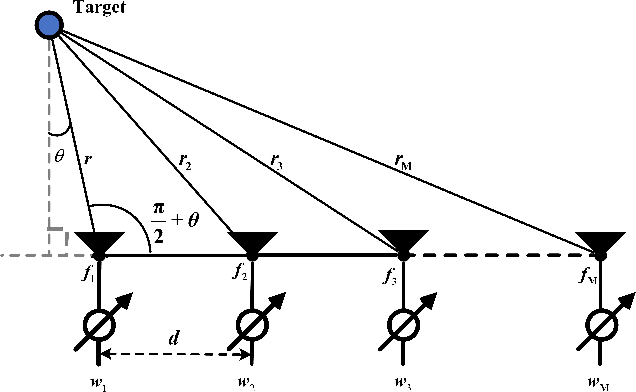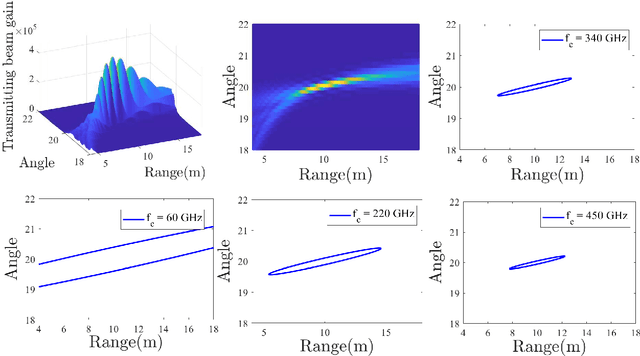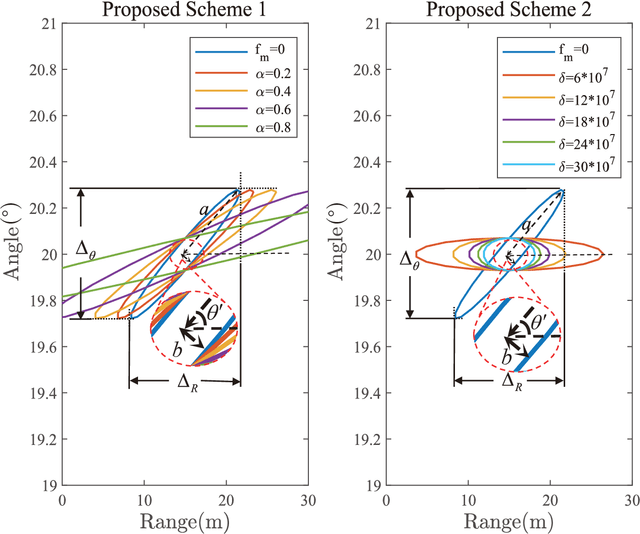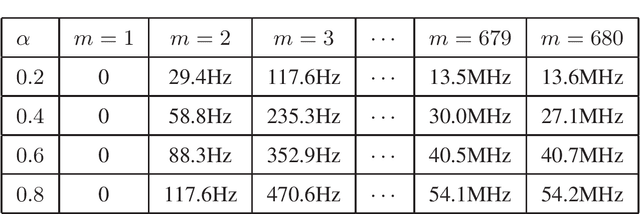An Analytical Range-Angle Dependent Beam Focusing Model for Terahertz Linear Antenna Array
Paper and Code
May 22, 2022



This paper considers a scenario in which the Terahertz (THz) transmitter equipped with a linear antenna array wishes to focus its beam to a desired spatial region in the array near-field. The goal is to compute the achievable spatial region and determine how the system parameters such as the carrier frequency, the array dimension and the user's location affect its beam focusing performance. First, based on a theorem from analytic geometry, we show that the achievable focusing spatial region constitutes a rotated ellipse, with the x and y coordinates denoting the range and angle, respectively. In this way, the determination of the spatial region is reduced to a problem of deriving the coverage of an ellipse. The achievable coverage is then obtained in closed form, and the construction of carrier frequency offsets that can analytically control the beam focusing performance is provided. Numerical results validate the theoretical findings and demonstrate the performance of the proposed method.
 Add to Chrome
Add to Chrome Add to Firefox
Add to Firefox Add to Edge
Add to Edge